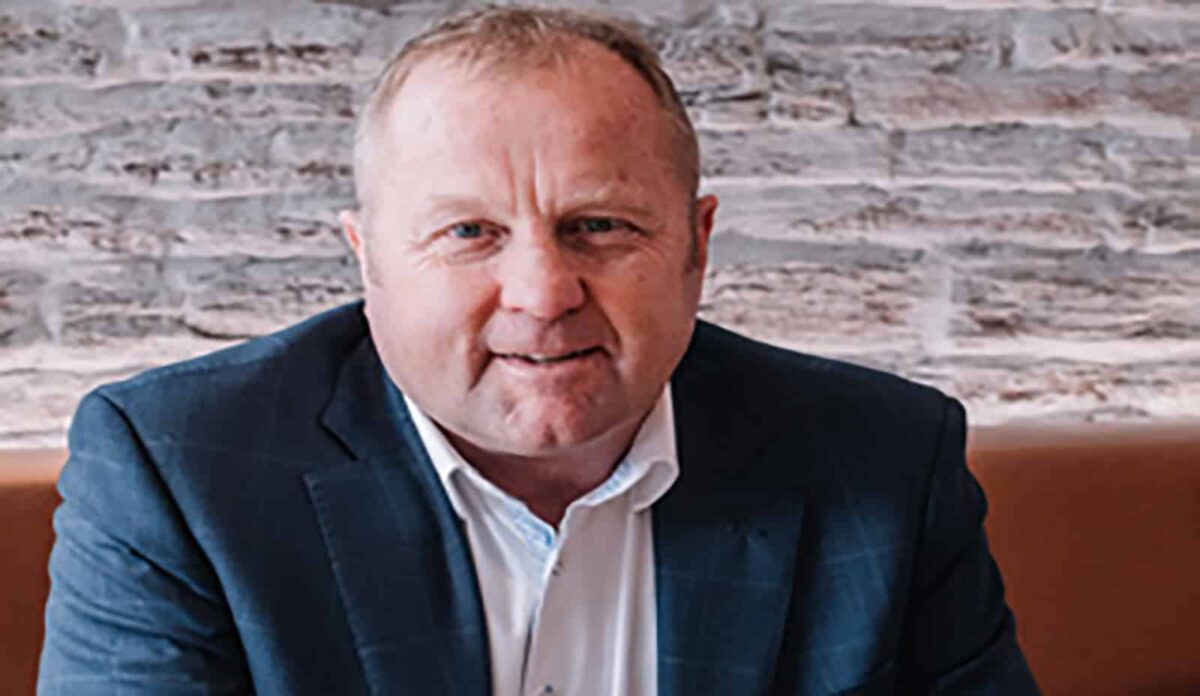
Our prognosticators were: Neil Barber, Maxine Boag, John Bostock, Charles Daugherty, Andrew Frame, Rex Graham, Alasdair MacLeod, Matt Miller, Katie Nimon, Mike Petersen, Kevin Snee, Apiata Tapine, Geraldine Travers, Tim Turvey, Alex Walker, Hamish White and Lawrence Yule.
Here’s what they had to say.
CHANGE
The diversity of responses reflected the view of Napier councillor Apiata Tapine, who sees Hawke’s Bay as an “intricately weaved tapestry” of “shared interests … evolving aspirations, shifting demographics, social and environmental accountability”.
His theme was change, and to him change means a new social voice emerging with new expectations: “Here in Hawke’s Bay, there is a growing self conscienceness, greater desire to see sustainable change and restoration of our native features.” And the challenge is “…how we as individuals contribute solutions and take ownership of our own footprint … our greatest challenge is leadership!”
Several others spoke of change.
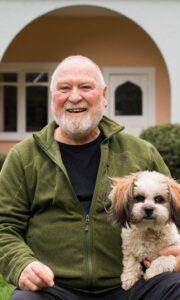
Like Apiata, CHB mayor Alex Walker speaks of demographic change, particularly as it affects the most rural parts of our province. “I think the biggest challenges for the next ten years lie in the north and south – Wairoa and Central Hawke’s Bay.”
“In Central Hawke’s Bay, the biggest challenge is our changing demographic. Over the next ten years the role of the baby boomers will change significantly in our community and I don’t think anyone is truly prepared for this. This is not just dealing with health and mobility of a large number of ageing residents, but more about how we are actually going to transition our economy and replace a large number of people with a smaller number of people as the workers, investors and leaders?”
Alex continues: “In a world where technology and connectivity is making life and business fast-paced and exciting, small towns like Waipukurau, Wairoa and Porangahau are not the first choice for our young people to spend large amounts of time. And we need them to be investing in small town Hawke’s Bay, raising their families and creating their futures here.”
Although CHB residential investment is presently strong because more people are seeking out affordable rural lifestyles, she notes: “Realistically, we need a far more sustainable approach where investment is not just in residential property, but also in business, industry, community, land and education.”
Regional Council chairman Rex Graham picks up the point, ‘Are we prepared?’

DISRUPTION
More than anyone else, Rex emphasises disruption.
But first he talks about the foundation: “The single biggest factor that has impacted on our community in the last decade is that our farmers, horticulturists, foresters and processors were positioned to be able to take advantage of the lift in international commodity prices. We can be proud of them because they hung in by their finger nails through difficult times.”
Another building block: “The resolution and in most instances the settlement of our nine treaty entities’ claims, which will empower tangata whenua culturally, socially and economically and create additional economic growth in the region.” From other responders as well, there’s a welcoming realisation that Māori economic influence will accelerate.
Rex sees meeting our region’s environmental obligations as another stimulus. As an example: “The scale of the riparian planting programme and the intended reforestation desperately needed to improve our rivers, streams, lakes and estuaries is so ambitious that it will generate its own economy, new business opportunities and GDP growth.”

So what could go wrong?
Rex observes: “Our traditional farming community will face challenges on several fronts with a potentially declining marketplace for traditional meat products, considerably higher operating costs as they internalise environmental cost of business, increased compliance costs and the risks and costs of increased adverse weather events.”
“We need to ensure that our region is still vibrant and relevant in 20 years time. By then, he says, “We will be challenged by huge disruptive influences from mother nature, technology and cultural change. The pace of these human advancements accompanied with rapid global climate change is incredible and already upon us.
So he worries: “I’m not sure that our region or any of us are really prepared for these life-changing challenges. We need to plan for how we will manage this impending massive disruption to our community and our people’s lives.”
OUR AGRI-BIZ OPPORTUNITY
It’s not surprising that our farming leaders have high aspirations for our ‘growing’ economy. The most progressive are prepared to take on Rex’s challenge.

To CHB sheep and beef farmer Mike Petersen, Hawke’s Bay’s aspiration is straight forward and within reach: “Be internationally renowned and revered as one of the world’s premium food and wine regions.”
Serving since 2013 as NZ special agricultural trade envoy, Mike has a uniquely informed perspective on HB’s prospects in the overseas marketplace where our food and beverage products compete.
Says Mike: “Hawke’s Bay has all of the necessary attributes to be recognised as one of the world’s most premium destinations for food and wine experiences. Natural beauty, favourable climate, significant land and seascapes, award-winning wines and cuisine alongside hospitable and welcoming people. These attributes make Hawke’s Bay a compelling destination.”
“But,” he argues, “there is a need to tell the story of Hawke’s Bay better, and to a wider audience. These same attributes also present an incredible opportunity to secure premiums for Hawke’s Bay produce using the provenance of the region and the story associated with premium food and wine.”
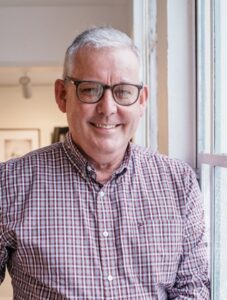
Grower and owner of Bostock NZ John Bostock would echo that. He points to big development of the apple industry with new varieties, growing technology, science and innovation and better branding and marketing; increasing sustainable land use and better environmental farming practices; and rising awareness of organics and an increased demand for HB organic, healthy safe food.
Says John: “I would like to see a better environment for financially sustainable businesses to prosper that can give stakeholders a meaningful return and good living wages for all. We need to see greater market access for Hawke’s Bay products around the world, especially Asia. Being able to harvest and manage our water sustainably without irrational political interference is also crucial to the future development of business in Hawke’s Bay.”
The challenges they see?
To Mike, it’s biosecurity incursions for our horticulture and livestock sectors. He warns, “Any incursion poses significant risk and threatens the economic and social fabric of Hawke’s Bay. Every farmer, grower and resident of Hawke’s Bay has an important responsibility in undertaking good and secure biosecurity practices.”
To John, it’s protecting the advantages we have. “We have the best growing land in New Zealand, so we should be using it to grow premium produce. We need to stop residential and commercial development on the best growing land in the world.” And improve our environmental standards, such as addressing the nitrification and sedimentation of our waterways. “We need to see a change in farming practices with more trees being planted on our steeper country. I would also like to see an end to synthetic agrichemicals and a 100% green Hawke’s Bay.”
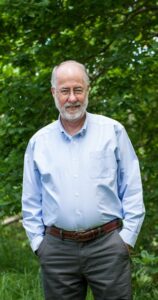
And of course, “Keep the region officially GM Free.”
Whether we’re exporting apples, logs or school furniture, virtually all of it goes through Napier Port.
Port chairman Alasdair MacLeod is fittingly concerned with the future viability of the Port. He wants a new wharf. “This region is a food and fibre region, and it’s critical we continue to have access to a reliable and efficient gateway to the world. As export volumes increase, and ships get bigger, we have no option but to grow our capacity at the port to deal with both.”
And he recognises the challenges involved. He notes the “critical importance of protecting and enhancing the access corridor to the Port through Ahuriri. Balancing the conflicting demands between local residents and the wider economy is hard, and going to get harder as the volume of cargo and trucks coming to Napier Port grow.”
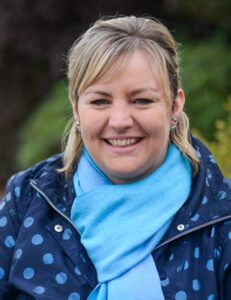
THE OTHER ECONOMY
Of course we do more in Hawke’s Bay than grow stuff, as important as that is as the mainstay of the HB economy.
For Neil Barber, proprietor of the Masonic Hotel and its popular Emporium bar and restaurant (and chairman of Hawke’s Bay Tourism), a key to future regional prosperity is, no surprise, more tourism. And with tourism credited with contributing about 10% of the region’s GDP, he has a point.
“Tourism is a substantial earner for the Hawke’s Bay region, expected to contribute up to $1 billion towards GDP by 2025 (presently $639m).”
But as recent public debate has underscored, Neil observes, “It has become clear that a long-term sustainable funding model needs to be developed for HBT as the official organisation responsible for destination marketing. This is the challenge. The way forward is not clear, visitor taxes, targeted rates, bed taxes, spreading the rating net to include ‘peer to peer’ properties are all part of the mix … HBT needs to be part of the conversations with both local and central government.”

Hamish White, CEO of NOW, agrees with the importance of tourism. He comments: “Blue sky and wineries aren’t a sufficient enough point of difference to woo the masses to Hawke’s Bay.” He believes we need to, “Invest (and partner) in the fixtures and assets that can make Hawke’s Bay a domestic and international tourism destination. There’s no silver bullet, but rather it’s the sum of the parts. It’s about recreation, sports and events, and building centres of excellence in chosen fields.”
Tim Turvey, co-owner of Clearview Estate Winery, would go a step further. And this might challenge some readers. He advocates: “Take a leaf from Queenstown to encourage a younger fun-loving clientele. We need more adventure excitement – a luge down Te Mata Peak or Napier Hill, fly by wires, bungy jumping, jet or power boat racing, artificial surf groins off the Cape Coast beaches, etc, etc.”
Beyond tourism, consider the further views of Hamish White. His company is the broadband and digital services company that was ‘born and bred’ in Hawke’s Bay.

Says Hamish: “We need to look beyond current industries that represent the lion’s share of Hawke’s Bay’s GDP and employment. It’s about bringing technology and shared services industries into the top three of HB’s contributors to regional GDP. An industry that can support our existing manufacturing and agriculture industries with automation and digital technology, while providing an appealing opportunity for NZ or international business to relocate large parts of their workforce to our region.”
He echoes the comments of CHB’s Alex Walker, saying a key challenge is: “Attracting and retaining the diverse range of skillsets that is needed to support a growing number of industries. Graduates and professionals are gravitating toward the bigger cities to ‘hit the big time’, we need to be able to provide the opportunities, training, support and environment in which graduates, young professionals want to stay, develop and be the leaders of developing industries in Hawke’s Bay.”
But Mogul co-owner Matt Miller seems a bit skeptical. He agrees that “The biggest challenge for Hawke’s Bay is for it to reach its economic potential and provide a great lifestyle and opportunities for everyone who chooses to live here.”
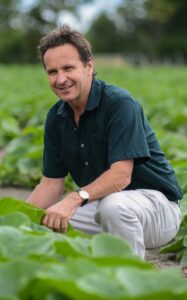
But he’s heard it all before. “I have been in Hawke’s Bay for 12 years now and the region’s handbrake still seems to be stuck on, and the same old issues seem to dominate the headlines. It would be great to see some visionary policies and investment decisions that enable everyone to participate more fully in the economy.”
Meantime, Matt is happy to to see the Clifton Cricket Club thrive, and he’d welcome seeing Hawke’s Bay become “the first New Zealand region to record a zero road toll. Along with rapid advances in vehicle safety, there is a huge amount of work going into the roads around Hawke’s Bay at the moment and some of our most dangerous intersections are being re-engineered.”
SOCIAL EQUITY
Napier Port’s MacLeod looks ahead to major social challenges our region faces. “The most significant challenge is creating pathways into meaningful employment for more of our people, particularly our rangatahi.”
He isn’t alone in raising the issue of improving Hawke’s Bay’s social wellbeing.
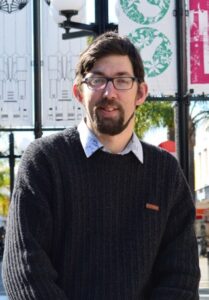
John Bostock comments: “Our challenge is to work with the community to address the massive social issues and get a significant number of unemployed into full-time jobs. Building a harmonious community with a greater understanding between all cultures should be a focus. We need to improve nutrition and promote healthy eating and healthy lifestyles through better community awareness and education. Addressing the P and drug and alcohol abuse should be a priority, so that we can ultimately create a loving, caring and safe home for every child in Hawke’s Bay.”
Educator, Hastings councillor and chairperson of EIT’s Board Geraldine Travers urges:
“I would like to see an end to the huge gulf between different sectors of our community. As a fifth generation New Zealander it grieves me that we have an increasing divide between rich and poor and what is worse, the presumption that those who are less well resourced are somehow less worthy than the affluent. One of my literary heroes, Atticus Finch, says ‘you never really understand a person…until you climb into his skin and walk around in it.’”

She continues: “We are all deeply flawed and one adverse event away from disaster. That realisation should make us treat others with more compassion. There should be no such thing as the ‘working poor’ … Everybody who works should be able to lead a dignified, fulfilling life. It is still possible, although not as easy as before, to grasp the benefits of a free state education and carve out one’s own destiny.”
Our social issues are daunting. Bostock mentions alcohol abuse, for instance, and Napier councillor Maxine Boag would strongly agree.
In fact, judging from her response, alcohol-related harm would be her #1 priority: “Hawkes Bay has a disproportionately high number of hazardous drinkers, and even if we are not one of them, we still pay for all alcohol-related harm.”
Maxine argues that: “Current regulation is not doing enough to reduce alcohol-related harm. The easy availability of cheap alcohol and sophisticated marketing have contributed to what has been termed an ‘alcogenic’ environment.”
She advocates: “To reduce alcohol-related harm, central government needs to enact the recommendations made eight years ago by the Law Commission report on alcohol by taking it out of supermarkets, introducing minimum unit pricing, increasing support for mental health services and phasing out alcohol marketing including sports sponsorships.”

For MP Lawrence Yule, the top social issue is methamphetamine and gangs. “All political parties are supportive of the announced extra Police numbers, but more needs to be done to combat organised crime. Most people in Hawke’s Bay would now have at least one P user in their street. Unfortunately this is providing a ready business opportunity for gangs and their prevalence is expanding. Hawke’s Bay requires a greater focus on drug use reduction and the better provision of drug treatment services, including residential treatment facilities.”
And for Nimon’s general manager Katie Nimon, the top social issue is mental health, and particulary suicide prevention. She notes that suicide rates are higher in rural and lower decile areas, putting Hawke’s Bay immediately at a disadvantage. “We’ve just got to get the numbers down. It’s a massive milestone … And it begins with education.”
She writes: “Mental health in Hawke’s Bay has needed attention for some time. The problem we have is a lack of mental health education, and an overloaded health system that can’t process patients fast enough. Someone suffering from a life-threatening accident or illness is treated immediately, but a high-risk mental illness is not treated with the same urgency.”
“We can talk about it all we like, but if we can’t cope with the problem at hand, taking your own life becomes easier than seeking help when you need it.”

As chief executive of Hawke’s Bay DHB, the buck stops with Kevin Snee when it comes to health care in the region. He (and others) point to the recent build of the long-needed mental health inpatient Unit – Ngā Rau Rākau – as one component of dealing with Katie’s concern.
But more broadly, Dr Snee makes the connection between social inequity in Hawke’s Bay and wellness. He comments:
“Only by eliminating inequity, and giving everyone the same opportunities in life can we help build a community focused on wellness. Eliminating inequity will relieve health systems, and many of our social services, from the burdens they currently face. It should be a given that all children have the same opportunities and start in life.”
What does this require in practical terms?
He continues: “Economic development needs to address social inclusion in the way it is implemented. For example, targeting employment at deprived communities means they are more likely to be able to afford warm, dry housing. This means children get a better start in life, become better educated, and are then able to become economic contributors to our region.”
His goal: “I would like to see us recognised as the best, most integrated and progressive health system in New Zealand.”
Can’t argue with that. And with a comprehensive review of DHB’s delivery of clinical services about to hit the streets for public consultation, Katie Nimon and the rest of us will have our chance to speak up and give our advice to Dr Snee on achieving his aspiration!
ENVIRONMENT
Last but not least, there was plenty of comment on the environment, some of which has already been cited. But not just from the usual suspects, like HBRC’s Rex Graham.
NOW’s Hamish White, an avid planter of natives, lists as one of his three major challenges: “Protect and restore our beaches, ocean, rivers and mountains. This is what makes Hawke’s Bay what it is and we need to protect these assets.”
Napier blogger Andrew Frame talks about “the power of nature”. “I would like to see Hawke’s Bay embrace alternative energy far more. We are constantly amongst the highest sunshine hours in the country year upon year, yet there is a notable lack of solar energy being harnessed.”
He adds: “We also have hundreds of kilometres of coastline where currents and sea breezes could utilised to produce near-endless power. We’re putting satellites into orbit from Mahia; imagine what we could achieve on solid ground!”

Clearview’s Tim Turvey argues we need to do a better job with recycling
and rubbish disposal, and, with respect to our municipal outfalls, adds bluntly: “I believe we are still pumping reasonably raw, slightly treated shit into our greatest natural resource – the ocean.”
Lawrence Yule focuses on water: “In light of massive climate change challenges I would like to see a comprehensive land and water strategy for the region, including Wairoa and CHB, to support our economy, quality of life and the environment. This requires collective choice and community decisions on storage, drinking water, industrial use, horticulture use and the enhancement of water quality.”

Charles Daugherty spent 33 years at Victoria University as a professor of ecology and has been awarded an ONZM for services to conservation and biology. Now a HB resident and chair of HB’s Biodiversity Strategy, he offers a lofty vision of “nature-rich cities”.
“The return of nature’s gift, our native birds, to the people of Hawke’s Bay. For too long, Hastings and Napier have been ecologically barren, our unique birdlife absent, and our children growing up with no dawn chorus. We can change this and more in a decade” … creating “a nature-rich future for the people of the Bay”.
“Three landmark environmental restoration projects surround, but do not include, Hastings or Napier (Cape Sanctuary, Cape to City, and Poutiri Ao ō Tāne). Let’s put people at the centre of ecological restoration – by linking these projects with corridors of native vegetation to support birdlife through to the cities. We can create nature-rich cities that are more sustainable, support businesses, attract tourists, and connect residents with our natural heritage.”
Charles’ vision, added to others reported in this article, paints a Hawke’s Bay where we would all like to live. As Apiata Tapine said at the outset, all it takes is leadership. We close with his question: “Who do I know that could lead HB to transform itself in the coming decade?”
BayBuzz readers … How would your aspirations for Hawke’s Bay stack up against these? Are our community leaders on the mark? Too timid? Do they have blind spots?
Send your comments to: editors@baybuzz.co.nz

